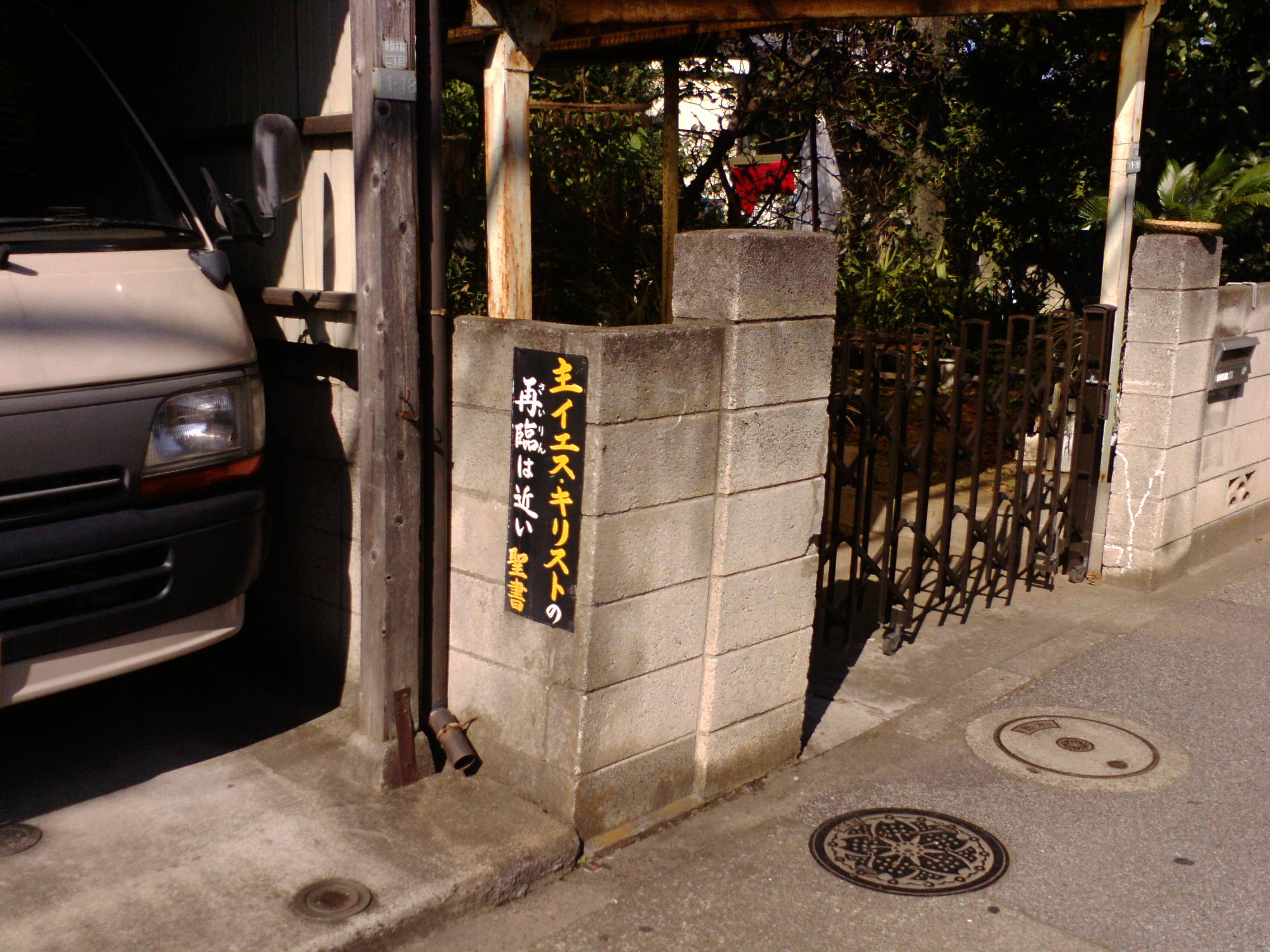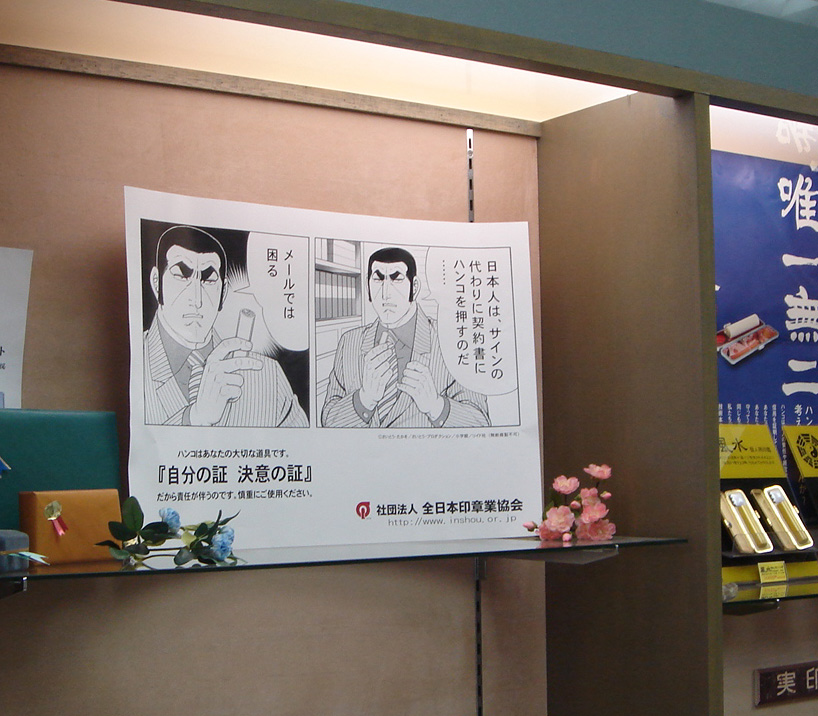Almost as soon as I got back to my house in Kyoto, I slipped down the stairs and bruised the fuck out my left butt-cheek, which currently displays a prominent horizontal black-and-blue line. This was not an auspicious start. The next day, when I stopped by a bicycle shop to get some air in my tires, I accidentally jerked my iPhone out of my pocket via the headphone cable, upon which it plummeted in a dead drop directly into the spikey concrete underfoot, shattering the screen like a cobweb. After a moment of horror, I went directly to the Softbank shop, where they swapped it for a fresh one at a very unpleasant cost of ¥22,800, mollified only very, very marginally by the fact that it only took about ten minutes, and that iTunes does a good job of backing up all of the data on my PC.
Yesterday afternoon, I joined my friend Kate on an expedition to Fushimi Ward, in southern Kyoto City, to recover two bicycles of hers that had been impounded the previous day when she and a friend parked illegally while having dinner downtown. (See Adam’s post on bicycle collection.) I brought my camera along, hoping to take some photos of the lot, but as soon as I arrived I pulled out my camera from my bag and saw that the lens had been broken entirely in half! Luckily I was only using my Canon 50mm 1.8F, the cheapest SLR lens currently (if not ever) made, which retails for under $100, so the loss was relatively minor, and I do have several other lenses I can use, but following on the heals of the iPhone disaster I was still very, very pissed.
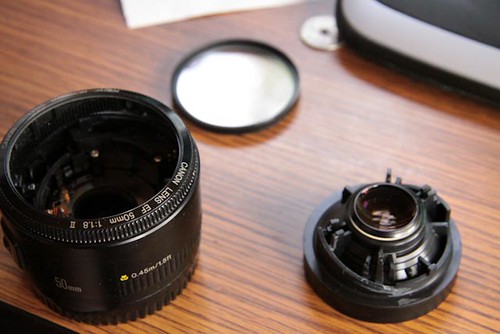
Upon returning home I pondered whether this would be a good chance to upgrade to the 1.4F version, which allows for even more dramatic depth of field, has a superior focusing mechanism, and also a superior level of build quality that does not lend itself to breaking in twain, but decided that at this time I don’t have another $300 to blow on top of the replacement cost, and just ordered a replacement of the broken model from Amazon Japan for ¥8,800. While I had first thought of it as a pure loss, this morning an idea occurred to me.
I had read in the past that in older, fully manual, camera systems it used to be common to mount a second lens backwards onto the front of the lens being mounted in the ordinary fashion, as a makeshift macro lens. A macro lens is a type of lens that is specially built to allow for extremely closeup focusing, enabling the photographer to create dramatic closeup photographs which show extreme detail, almost like a weak but highly portable microscope. You have probably seen many examples in nature photography.
Anyway, I decided to see how it would work with my broken lens, so I mounted the 17-85 EF-S lens on my camera, held the front part of the broken lens (right hand side piece in the above photo) up to the mounted lens, with the previously outer-facing side of the lens facing towards the camera body, and then checked to see what I could do with manual focus. Well, the first shot (of my knee hair) actually looked pretty cool.
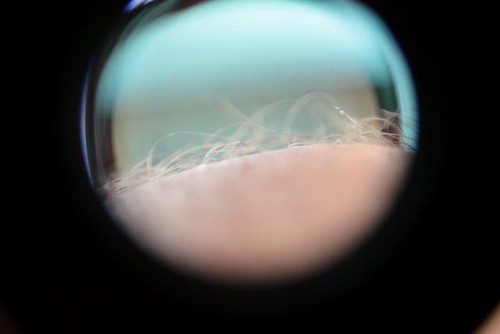
Next I tried the one yen coin and dirty lens cloth sitting on my desk, and then took comparison shots using the 17-85 lens by itself, to contrast the level of magnification provided by the conventional lens and the DIY macro. Note that none of these photos are cropped, magnified, or adjusted in any way.
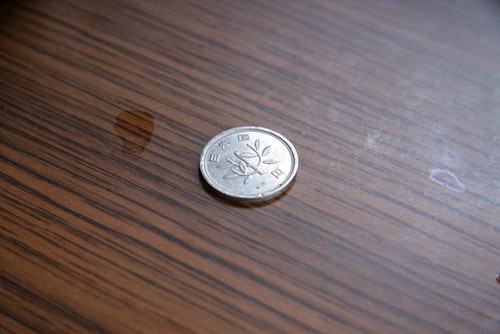

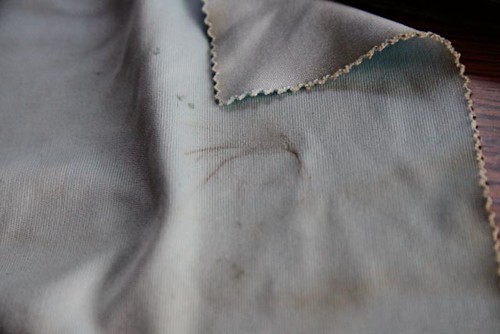

As you can see, the DIY macro provides significant magnification when compared with the standard lens, over 100% larger, as well as a quirky DIY fisheye effect reminiscent of toy cameras like the Holga. While I might not have ever thought to destroy my lens for such a use, it may actually be worth the cost to play around with it in this way. While these photos were taken in a very makeshift way, by holding everything in place using both hands, both knees, and a funny crouch in my chair, the next step will be to purchase a lens cap for the 17-85 lens, cut a hole out in the middle, and construct a DIY mount that allows me to safely walk around with the makeshift macro. I may also experiment with removing the lens from its plastic enclosure and seeing how it performs when held closer to the primary lens. I’ve wanted a macro lens for a long time, and while this is hardly the way I would normally have considered going about acquiring one, it should be a lot of fun to play with.





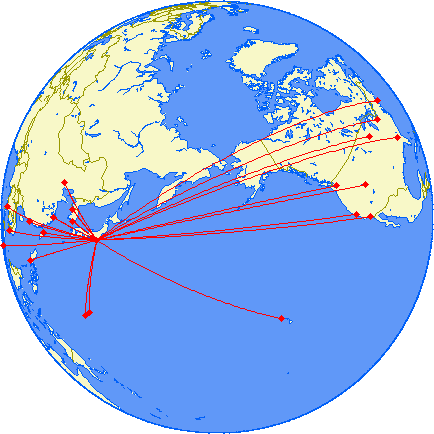 This is the ex-Narita route map of Delta Air Lines following its acquisition of Northwest. Delta is the #3 carrier at Narita with about 330 flights/week, compared to JAL’s 870 and ANA’s 500.
This is the ex-Narita route map of Delta Air Lines following its acquisition of Northwest. Delta is the #3 carrier at Narita with about 330 flights/week, compared to JAL’s 870 and ANA’s 500.
